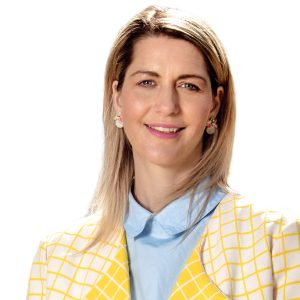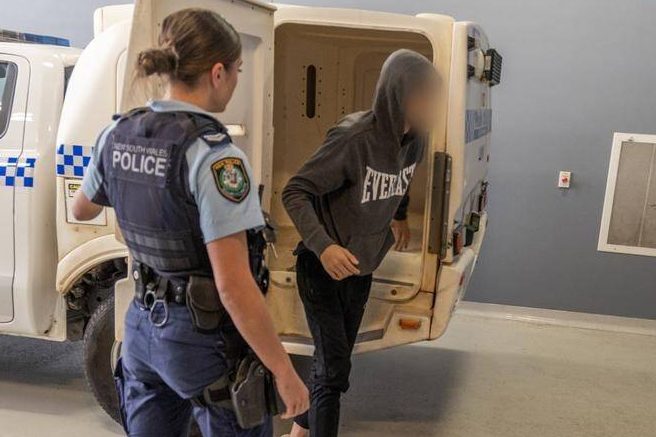
GROWING up on Sydney’s north shore, Rachel Hore didn’t know much about First Nations people.
Forty years later she leads a choir bringing indigenous and non-indigenous singers together to sing, heal and honour the oldest living culture on earth.
Hore, 59, is the music director and founder of Big Sing, a not-for-profit organisation that facilitates singing and choral events for Aboriginal and non-Aboriginal Australians.
“When I grew up, I didn’t meet an Aboriginal person until I was 26 years-old and that’s probably quite normal in Australia,” Hore said.
Hore, a Canberra resident, has dedicated a large part of her career to promoting greater appreciation and awareness of indigenous music and culture.
Coinciding with National Reconciliation Week (May 27-June 3), she hopes to highlight the role singing plays in creating community and bridging cultural differences.
“Singing opens people’s hearts,” Hore said.
“When we come together, black and white, to sing it becomes a beautiful vehicle for learning more about each other.”
Ten years ago, Hore created the first Big Sing event, Big Sing in the Desert, in central Australia.
The cross-cultural choral workshop, still going today, attracts around 120 participants each year with some Aboriginal women travelling 700 kilometres to attend the three-day event.
In a musical exchange, Aboriginal singers share songs and mission hymns in their language and Hore teaches the group new songs.
“That was the very first time that Aboriginal and non-Aboriginal singers came together at a singing camp,” Hore said.
Since then, Hore has replicated the Big Sing concept, adapting it to different locations and communities across the country.
Big Sing by the Sea, in Forster, kicked off in 2017 and engages local Worimi and Birpai people in shared music and language development.
On the final day, participants perform a concert for the community.
“It’s singing and music, but it also brings in elements of the local culture, so we take people on a cruise to show them the local lakes where the Aboriginal people used to fish.
“Out in the desert there’s lots of weaving work and painting and we cook kangaroo tail, there’s a lot of culture that is shared depending on where the events are.”
The third Big Sing event is Singing on Deerubbin Shores in Richmond, NSW, at the foothills of the Blue Mountains.
Running for three years, the event celebrates Darug language and culture on Darug country.
“Deerubbin is the local Darug word for the Hawkesbury-Nepean River, the river that runs through the area,” said Hore.
“We have two Aboriginal musicians who are learning to be choir leaders, so they are leading that event and they are teaching songs in Darug.”
While some Australians remain unaware of Aboriginal history and culture, Big Sing choral events provided them with a space to learn, Hore said.

“At Big Sing by the Sea in Forster, that’s the biggest Aboriginal community in NSW, but it’s quite hidden and many non-Aboriginal people don’t even know their local elders,” Hore said.
“But since these events, which have created a space where the local Worimi and Birpai culture is highlighted, people are starting to understand the Aboriginal history of their own area.”
Hore, an OAM recipient for her work with choirs and communities, is also a former graduate of the NSW Conservatorium of Music.
She said singing together creates a slow healing process and journey for Aboriginal and non-Aboriginal participants.
Big Sing events are also helping to preserve rare and ancient languages.
“In the central desert we work with women from Areyonga, Alice Springs, Ntaria (Hermannsburg), Titjikala, Mutitjulu and Docker River and they have pretty strong connections to their language and have preserved a lot of their language through singing hymns,” Hore said.
“The women love teaching us their hymns. They were introduced to them by the Lutheran missionaries.
“Other Aboriginal communities like to sing modern songs that they have translated into their own language and some Aboriginal songwriters are writing songs in their own language which we sing in a choir.”
Performers, across all Big Sing events, are a mix of young and old – the eldest is 80 years of age.
“We have people of all different ages coming from every state in Australia to participate in the choral events,” Hore said.
“The Big Sing experience is transforming us as Australians.
“I don’t see many places where Aboriginal and non-Aborigial people can be in the presence of each other and be on the same page in a safe and connected way.”
A movie night fundraiser in aid of Big Sing, screening “Teach a Man to Fish”, will be held at the Kambri Cultural Centre, ANU, June 2. Tickets here.
Who can be trusted?
In a world of spin and confusion, there’s never been a more important time to support independent journalism in Canberra.
If you trust our work online and want to enforce the power of independent voices, I invite you to make a small contribution.
Every dollar of support is invested back into our journalism to help keep citynews.com.au strong and free.
Thank you,
Ian Meikle, editor





Leave a Reply